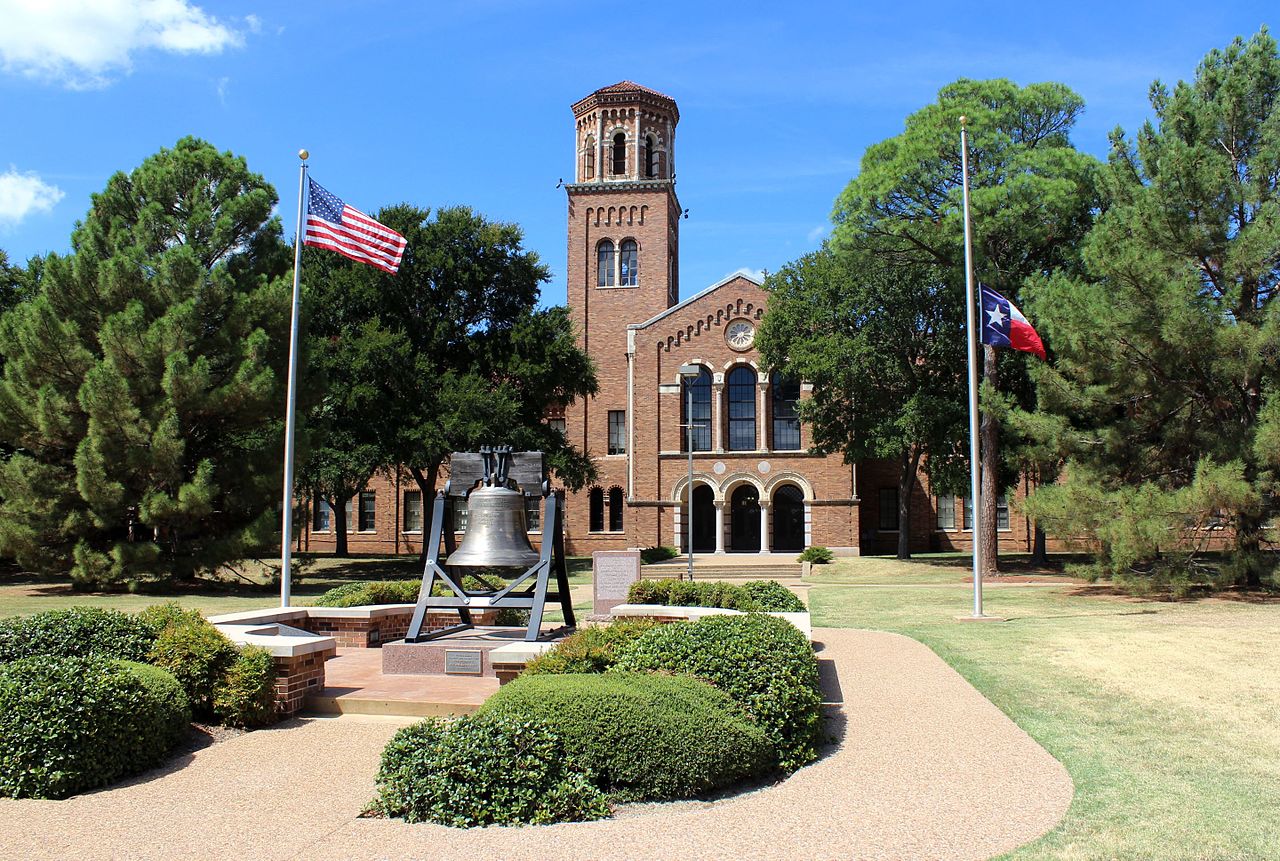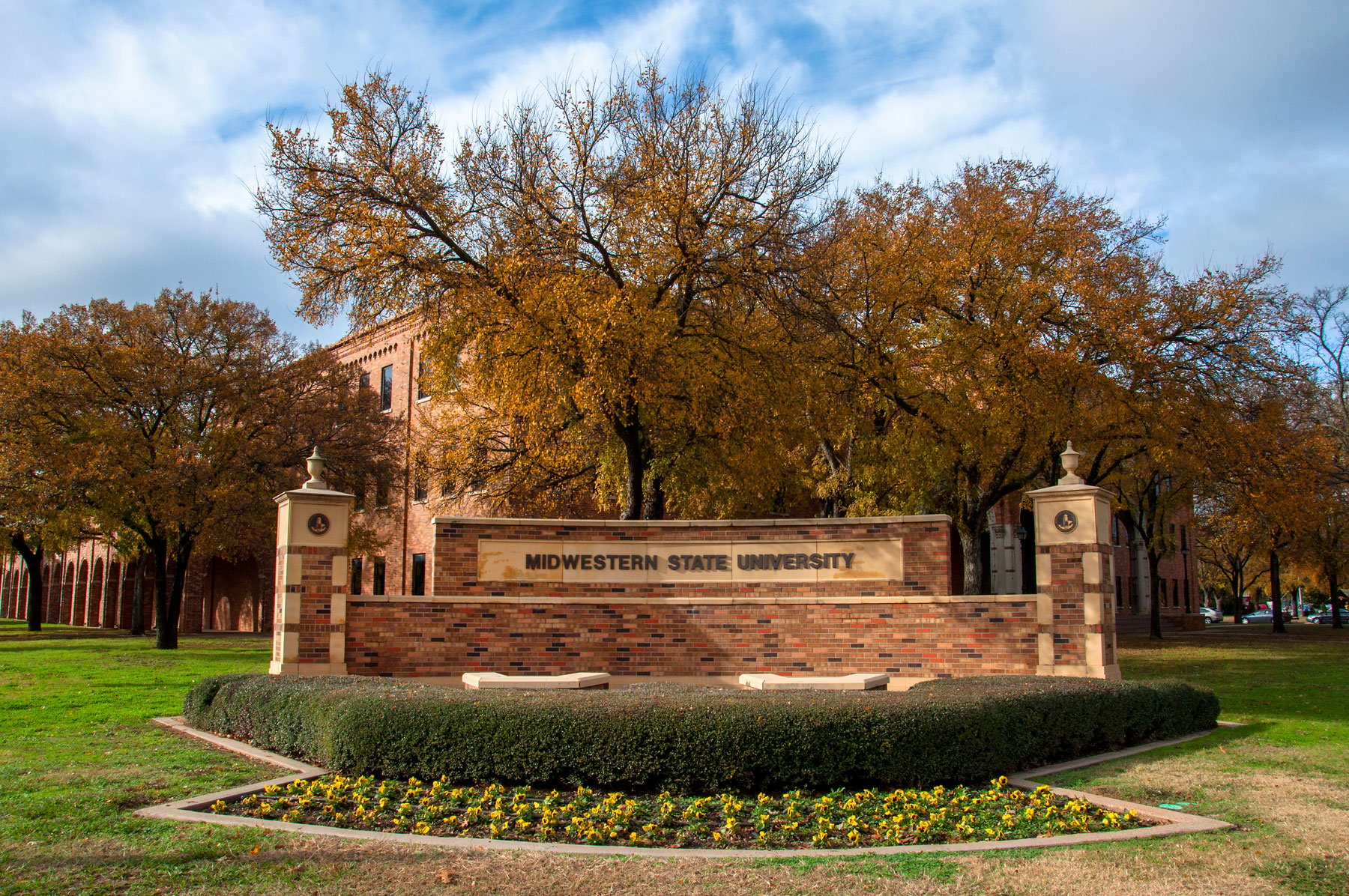Midwestern State University

Hardin Administration Building at Midwestern State University

Midwestern State University Sign

Akin Auditorium Building

Clark Student Center

Bolin Science Hall
Wichita Falls Junior College, forerunner of Midwestern State University, opened in September 1922, the second municipal junior college in Texas. It was operated by the Wichita Falls ISD and superintendent Randolph Lee Clark. Its liberal arts curriculum drew fifty-five freshmen that fall. Classes met in the high school on Broad Street. After two years both high school and college moved to expanded quarters on Avenue H. The new three-story brick building cost $550,000. WFJC occupied the third floor. Under President James W. Cantwell (1923–31) enrollment rose to 160 students. In 1928 the enrollment was 390. In 1934 Mr. and Mrs. John J. Hardin, local philanthropists, established the Hardin Foundation to promote a separate campus. Voters responded, approving $200,000 in bonds and a junior college district with the same officers and board as the school district. A Public Works Administration grant was also secured by President Herbert Fillers (1931–41) and his trustees. By 1936 work began in the southwest part of town on forty acres donated by W. B. Hamilton and N. H. Martin. In the interval WFJC met downtown at the First Methodist Church education building. The new campus opened in 1937 on Taft with a new name, Hardin Junior College. It had one structure—now the Hardin Administration Building—and a cafeteria serving 260 students. In 1941 the legislature separated the college from the school district; George Crutsinger became interim president (1941–42). During the next two decades Hardin underwent exceptional growth due to World War II and the energy of its new president, James B. Boren (1942–55). Aware of defence needs, Boren established vocational programs in such fields as horology and aviation. The GI Bill accelerated growth; by 1947 one-fourth of the 850 students were from outside Wichita County. In 1946 the school began offering junior and senior years and became Hardin College. In 1950 it became Midwestern University, and by 1952 it offered postgraduate degrees. By then the faculty had seventy members, further programs had been added, and new structures ringed the campus.
Under President Travis White (1955–74), MU overhauled its administration, established a tenure and promotion system, and began an honors program. Science and art courses were expanded. Major oil companies drew on the School of Petroleum and Physical Sciences, and the Dalquest collection of vertebrates and North Texas paleontology became known nationally. Bands and an orchestra lured music majors; a business school began in 1958. Inexorably, growth exacted a price. Costs outran local revenue. A drive led by Senator George Moffett to place MU in the state college system succeeded in 1961, and the name became Midwestern State in 1975. Since then nine regents appointed by the governor have chosen a president and staff. Enrollment topped 2,800 in 1964. Yet dwindling state funds for liberal arts colleges caused many to be concerned. This problem was addressed by President Thomas Barker (1974–81), who launched an "Advance Midwestern" campaign for scholarship and endowment funds that raised $1.8 million. Meanwhile MU adopted fiscal and administrative policies moving it beyond the level of a small regional university. Barker's vision was for a more diversified faculty, a health-sciences division, and an expanded business program. A spacious fine arts building-theater opened in 1976. By 1981 Midwestern enrolled 4,300 students and was accredited by eleven professional organizations. It became the goal of President Louis Rodriguez (1981-) to make MSU a vital part of the intellectual and economic life of North Texas. The school's Small Business Center has given administrative and economic guidance to hundreds of regional businesses and industries. MSU put significant resources into its health sciences division and high tech development and retraining (aided by state and federal grants). It added a football team and marching band, and expanded its dormitory space. Shrinking state funds ended classroom construction; but older structures have been extensively rebuilt, including the Moffett Library and the Clark Student Center.
Everett W. Kindig | © TSHA

Adapted from the official Handbook of Texas, a state encyclopedia developed by Texas State Historical Association (TSHA). It is an authoritative source of trusted historical records.

- ✅ Adoption Status:
Belongs to
Midwestern State University is part of or belongs to the following places:
Date of Founding Notes
Classes first held in 1922 as Wichita Falls Junior College; joined the state university system in 1961 and changed name to Midwestern State University in 1975; joined the Texas Tech University System in 2021
People
-
Interim President, Dr. Keith Lamb 2023–2023
-
President, Stacia Haynie, Ph.D. 2023–Present
Currently Exists
Yes
Place type
Midwestern State University is classified as a College or University
Tags
External Websites
- Midwestern State University (Official Website)
Fall Faculty Count, 2019 View more »
346
Fall Enrollment Count, 2022 View more »
5,422
